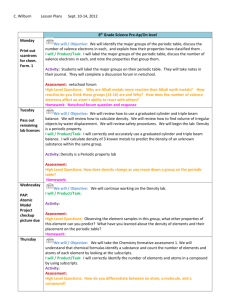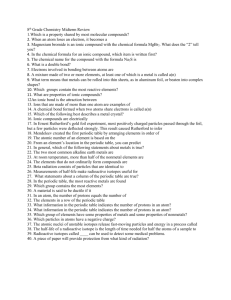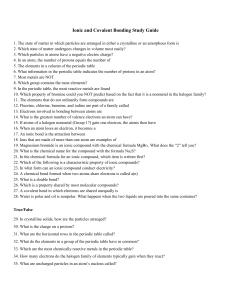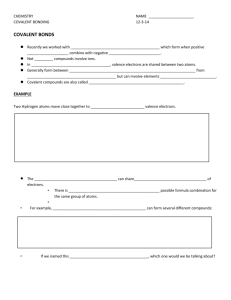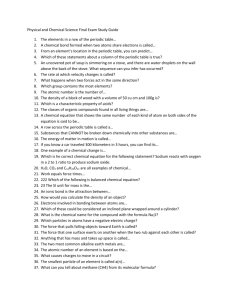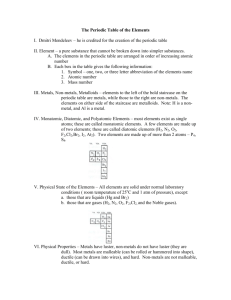UNIT 3-Chemical Structures
advertisement
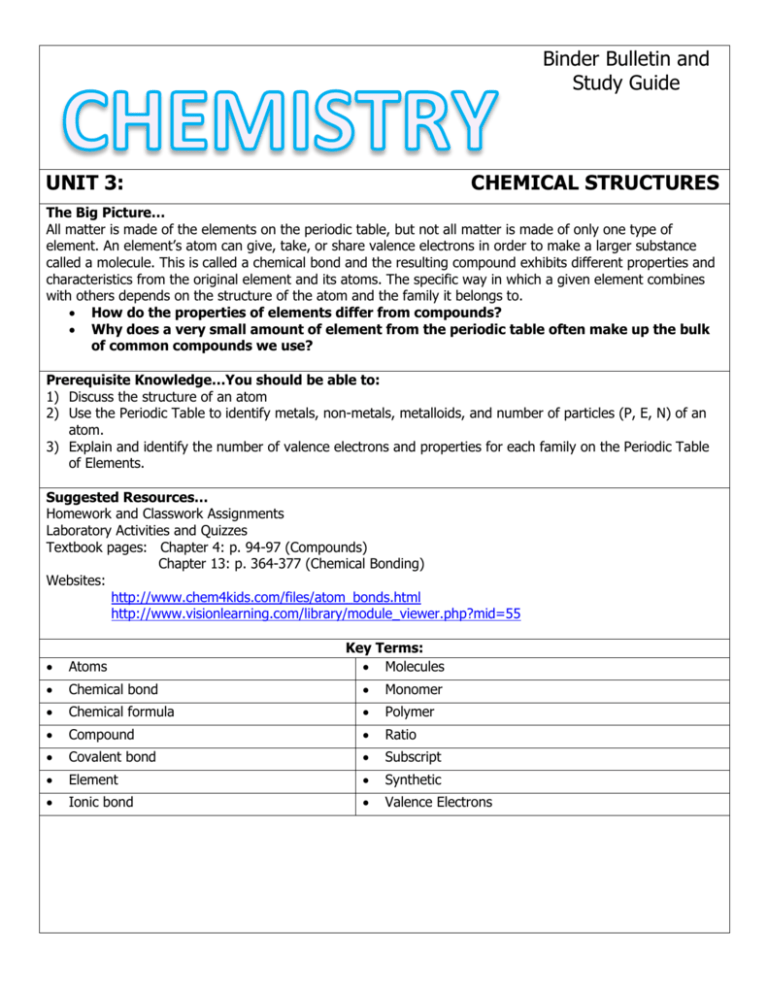
Binder Bulletin and Study Guide UNIT 3: CHEMICAL STRUCTURES The Big Picture… All matter is made of the elements on the periodic table, but not all matter is made of only one type of element. An element’s atom can give, take, or share valence electrons in order to make a larger substance called a molecule. This is called a chemical bond and the resulting compound exhibits different properties and characteristics from the original element and its atoms. The specific way in which a given element combines with others depends on the structure of the atom and the family it belongs to. How do the properties of elements differ from compounds? Why does a very small amount of element from the periodic table often make up the bulk of common compounds we use? Prerequisite Knowledge…You should be able to: 1) Discuss the structure of an atom 2) Use the Periodic Table to identify metals, non-metals, metalloids, and number of particles (P, E, N) of an atom. 3) Explain and identify the number of valence electrons and properties for each family on the Periodic Table of Elements. Suggested Resources… Homework and Classwork Assignments Laboratory Activities and Quizzes Textbook pages: Chapter 4: p. 94-97 (Compounds) Chapter 13: p. 364-377 (Chemical Bonding) Websites: http://www.chem4kids.com/files/atom_bonds.html http://www.visionlearning.com/library/module_viewer.php?mid=55 Key Terms: Molecules Atoms Chemical bond Monomer Chemical formula Polymer Compound Ratio Covalent bond Subscript Element Synthetic Ionic bond Valence Electrons Directions: Use this information as a general reference tool to guide you through this unit. Don’t hesitate to ask your teacher for help! By the conclusion of this unit, you should be able to explain each main idea below in your own words with supporting details: ______1. A molecule is made up of two or more atoms that are chemically bonded. ______2. A compound is made up of two or more different elements chemically bonded together. ______3. In a chemical formula, subscripts identify the number of atoms of the element who comes before it. ______4. The characteristic properties of substances change once they bond to make new substances ______5. Chemical Formulas are a shorthand way used to represent molecules and compounds. ______6. Subscripts are the small numbers to the right of the symbols in a formula. They represent how many of an element you have. (Ex. H2O means there are 2 Hydrogen atoms and 1 Oxygen atom in water) _____7. Metals and Nonmetals can bond with any element on the periodic table based on a set of rules. By the conclusion of this unit, USING THE MAIN IDEAS ABOVE AND INFORMATION FROM CLASS, you should be able to complete the following tasks: ______1. Identify models as elements, atoms, compounds, or molecules ______2. Build and write the formulas for common compounds ______3. Compare and contrast the characteristic properties of elements and the compounds they make. ______4. Identify metals and nonmetals in a chemical formula ______5. Identify the number of individual elements in a chemical formula. ______6. Investigate the structure, uses, and reasoning behind common synthetic polymers.


